Optimal microbicidal activity of polymorphonuclear leukocytes (PMNs) requires recruitment of a functional nicotinamide adenine dinucleotide phosphate (NADPH) oxidase to the phagosome. In this study, we used a synchronized phagocytosis assay and immunofluorescence microscopy (IFM) to examine the association of cytosolic NADPH oxidase subunits with phagosomes containing opsonized zymosan (OpZ). Ingestion of OpZ began within 30 seconds of particle binding and forming phagosomes were enriched for both F-actin and the actin-binding protein p57. NADPH oxidase subunits p47phox and p67phox were also recruited to forming phagosomes and were retained on mature phagosomes for at least 15 minutes. Colocalization of F-actin, p57, and p47phox on phagosomes was confirmed by immunoblotting. Translocation of p67phox, but not p57, to forming phagosomes was deficient in PMNs lacking p47phox. Surprisingly, we found that in PMNs from six individuals with X-linked chronic granulomatous disease (CGD), p47phox and p67phox accumulated in the periphagosomal area during ingestion of OpZ. However, in marked contrast to normal PMNs, p47phox and p67phox were shed from nascent phagosomes along with F-actin and p57 once OpZ was internalized (≈5 minutes). These data support a model in which flavocytochrome b is required for stable membrane binding of p47phox and p67phox, but not their association with the cytoskeleton or transport to the cell periphery.
INGESTION AND destruction of invading microorganisms by phagocytes is essential to effective innate host defense. The seminal work of Greenberg and Silverstein1showed that phagocytosis requires both sequential engagement of receptors on the phagocyte surface with ligands on the particle being ingested and localized actin polymerization at the site of ingestion. Once particle uptake is complete, actin is shed from the nascent phagosome, and this depolymerization of actin filaments is required for phagosome maturation and fusion with other organelles.1
In the case of polymorphonuclear leukocytes (PMNs), optimal microbicidal activity rests on generation of superoxide and other reactive oxygen species (ROS) within the phagosome through activation of the multisubunit nicotinamide adenine dinucleotide phosphate (NADPH) oxidase.2-7 NADPH oxidase activity is regulated at the level of enzyme assembly; in resting PMNs NADPH oxidase is dormant with unassembled subunits located in the plasma membrane and cytosol.4,6,7 On stimulation, cytosolic components p47phox, p67phox, p40phox, and rac2 translocate to the plasma membrane and associate there with the cytoplasmic domains of gp91phox and p22phox (which comprise flavocytochrome b).4,6,8-19 The results of several studies also suggest that the functional oxidase complex at the plasma membrane is associated with the cytoskeleton.20-25
The significance of NADPH oxidase to intact host defense is illustrated by the fact that persons who lack a functional NADPH oxidase have chronic granulomatous disease (CGD) and suffer from repeated life-threatening bacterial and fungal infections.2-5 Two thirds of CGD cases are the result of mutations in the gene for gp91phox on the X chromosome3,4,26 resulting, in most individuals, in a total absence of both gp91phox and p22phox.4,5 Subcellular fractionation and cell-free reconstitution studies using cells from these individuals have shown that the cytosolic phox complex (p47/p67/p40phox)4,6,10,15,27,28 does not translocate to the membrane, presumably due to the absence of its docking site.4,6,11,12,29 Similar studies, using cells from p47phox-deficient individuals, showed that p47phox is required for translocation of p67phox to the membrane during oxidase activation.4,8,29 Based on the results of these and other studies. the following model of NADPH oxidase assembly has been proposed. In response to oxidase-activating stimuli, such as fMLP or phorbol 12-myristate 13-acetate (PMA), cytosolic p47phox is rapidly phosphorylated on serine residues,6,30-38 and the p47/p67/p40phox complex then translocates to the cell periphery. This movement requires p47phox4,8,29,35and may also involve p40phox-p57 interactions.39 On arrival at the plasma membrane, p47phox is phosphorylated on additional serine residues and binds to flavocytochrome b.6,16-19,31,32,35,40-42 Rac2 translocates to the membrane independently, and p67phox binds both rac2 and flavocytochrome b.8,11-14,43 44 Finally, active NADPH oxidase generates superoxide at the plasma membrane.
With this model in mind, we used a synchronized phagocytosis assay and immunofluorescence microscopy (IFM) to study NADPH oxidase assembly on phagosomes containing opsonized zymosan (OpZ) particles in adherent PMNs. We show here that p47phox and p67phox were recruited to forming phagosomes in both control PMNs and in cells from six individuals with cytochrome-deficient X-linked CGD. After OpZ ingestion, p47phox and p67phox were retained on maturing phagosomes in control PMNs, but shed from phagosomes along with F-actin in cells from patients with X-linked CGD. We propose that in X-linked CGD translocation of the p47phox/p67phoxcomplex to the periphagosomal area is normal, and that its transient accumulation in this region requires interaction with the cytoskeleton. In the absence of flavocytochrome b, stable membrane binding cannot occur, and both p47phox and p67phox return to the cytosol when cytoskeletal proteins are shed from the phagosome.
MATERIALS AND METHODS
Materials.
Hank’s Balanced Salt Solution (HBSS), Hepes-RPMI, L-glutamine, and Dulbecco’s phosphate-buffered saline (DPBS) were obtained from BioWhittaker (Walkersville, MD). Fetal bovine serum (FBS) was obtained from HyClone (Logan, UT) and horse serum was obtained from GIBCO (Grand Island, NY). Round glass coverslips (12 mm diameter) were from Fisher (Pittsburgh, PA). PMA was from LC Laboratories (Woburn, MA). Zymosan particles were from ICN Biochemicals (Aurora, OH). Rhodamine phalloidin, Texas red-conjugated goat antimouse IgG, and Texas red-conjugated goat antirabbit IgG were from Molecular Probes (Eugene, OR). Latrunculin B was from Biomol Research Laboratories, Inc (Plymouth Meeting, PA). Monoclonal antibodies (MoAbs) to gp91phox (54.1) and p22phox (44.1)45 were the generous gift of Drs A. Jesaitis, M. Quinn, and J. Burritt (Montana State University, Bozeman, MT). Fluorescein isothiocyanate (FITC)-conjugated goat antimouse IgG+IgM and FITC-conjugated donkey antirabbit F(ab’)2 were from Jackson ImmunoResearch Laboratories (West Grove, PA). Additional reagents were obtained from Sigma (St Louis, MO).
Isolation of human neutrophils.
Heparinized venous blood was obtained from individuals in accordance with a protocol approved by the Institutional Review Board for Human Subjects at the University of Iowa. PMNs were isolated as described previously using dextran sedimentation and gradient separation on Ficoll-Hypaque.46 The purity of the isolated cells was ≥95%. PMNs were isolated from both normal controls and from five individuals at the University of Iowa with X-linked CGD (AlS, TB, MK, TS, and DS). TS and DS are siblings, and the remaining subjects are unrelated. Additional blood samples from one individual with X-linked CGD (HB) and one individual with p47phox-deficient CGD (GP) were obtained from Dr John Curnutte and Julie Rae (Genentech, South San Francisco, CA). Isolated PMNs were resuspended in DPBS and then diluted into Hepes-RPMI containing 10% heat-inactivated (HI)-FBS and 1% L-glutamine to achieve ≈5 × 105 PMN/mL.
Generation of polyclonal antibodies (pAbs) to p47phox and p67phox and affinity purification.
Recombinant p47phox and p67phox were produced inEscherichia coli strain DH5α as glutathione-S-transferase fusion proteins (GSTp47phox and GSTp67phox, respectively) and then purified using glutathione-coupled agarose as previously described.47 A total of 0.5 to 1.0 mg of GSTp47phox or GSTp67phox was emulsified in Freund’s complete adjuvant and injected subcutaneously into female, white New Zealand rabbits. Antibody titers were boosted every 4 weeks with the same antigens in Freund’s incomplete adjuvant and serum was collected every 3 to 4 weeks after the second immunization.
The p47phox polyclonal antiserum was affinity-purified using GSTp47phox conjugated to CNBr Sepharose 4B (Pharmacia, Piscataway, NJ) at 0.5 to 1.0 mg protein/mL of Sepharose. Briefly, p47phox antiserum was diluted 1:8 in DPBS and incubated overnight at 4°C with 0.5 mL of the protein-conjugated Sepharose beads. Sepharose-protein-antibody complexes were washed three times in 100 vol of DPBS, transferred to a small column, and the antibody was eluted with 1 mL glycine-HCl, pH 2.3 into 110 μL 1.0 mol/L Tris, pH 8.0. Elution was repeated twice and the antibody was concentrated to 1 mL using a Centricon 30 microconcentrator (Amicon, Inc, Beverly, MA) as per the manufacturer’s instructions.
Antibody specificity was confirmed by immunoblotting to human PMN cytosol and to GSTp47phox and GSTp67phox (data not shown). Both antibodies were monospecific and did not cross-react. Furthermore, the anti-p47phox pAb immunoprecipitates both native and phosphorylated p47phox.48
Generation of anti-p57 MoAbs.
Spleen lymphocytes from Balb/c mice immunized with recombinant GST-p57 fusion protein49 were fused with mouse NS-1 myeloma cells using polyethylene glycol. Hybridomas were selected in hypoxanthine-aminopterin-thymidine (HAT) medium and supernatants were screened for anti-p57 activity. MoAbs from clone N-7 were used in this study.
Phagocytosis.
Zymosan particles were prepared as previously described,50opsonized with 50% normal human serum (NHS) for 30 minutes at 37°C,51 washed with DPBS, and then diluted in Hepes-RPMI. For synchronized phagocytosis assays, PMNs were plated onto acid-washed glass coverslips precoated with 10% NHS or HI-FBS to obtain ≈1 to 2 × 105cells/coverslip. PMNs bound to the coated glass after 10 to 15 minutes at 37°C and this type of adhesion did not stimulate NADPH oxidase activity (data not shown). Phagocytosis of OpZ by adherent PMNs was synchronized as previously described for macrophages.51 52 Briefly, OpZ were centrifuged onto PMNs (2 minutes, 400g, 12°C) and internalization of the bound particles was stimulated by rapidly warming the cells to 37°C. After 0 to 15 minutes at 37°C, cells were processed for microscopy as described below. In some experiments adherent PMNs were treated with 200 nmol/L PMA for 10 minutes at 37°C to induce cell spreading before the addition of OpZ. For both control and mutant PMNs, adherent cells or PMA-treated adherent PMNs gave comparable results (data not shown). Where indicated, PMNs were treated with 10 to 200 nmol/L latrunculin B for 10 minutes at 37°C before the addition of OpZ, and phagocytosis was assayed in the continued presence of the drug.
Fluorescence microscopy and image processing.
PMNs were prepared for IFM as described previously for murine peritoneal macrophages.51 52 Briefly, PMNs on glass coverslips were fixed for 15 minutes at 25°C in 10% neutral buffered formalin (Sigma) and then permeabilized in −20°C acetone for 5 minutes. Fixed cells were rinsed with DPBS and then blocked in DPBS supplemented with 0.5 g/L sodium azide, 5 g/L bovine serum albumin (BSA), and 10% horse serum (blocking buffer) for 1 hour at 25°C or overnight at 4°C. Fixed and permeabilized cells were incubated with primary antibodies (diluted in blocking buffer) for 1 hour at 25°C in a humidified chamber and then washed six times in DPBS-azide-BSA (PAB). After incubation with secondary antibodies or rhodamine-phalloidin for an additional hour, coverslips were washed six times in PAB, once with ddH20, and then mounted onto glass slides in gelvatol. Specificity of staining was assessed by omission of primary antibodies and by the use of mouse and rabbit isotype control antibodies (Zymed, South San Francisco, CA). Samples were viewed using a Zeiss Axioplan2 photomicroscope (Carl Zeiss, Inc, Thornwood, NY) and images were recorded on Kodak Ektachrome 400 ASA color slide film (Eastman Kodak Company, Rochester, NY). Slides were scanned to obtain digital images as Tagged image file format files and composites were generated using Adobe Photoshop 3.0 (Adobe Systems Inc, Mountain View, CA). Pixel intensity was measured on a 255-point scale using Adobe Photoshop. In each case, 20 phagosomes in PMNs from each of three independent donors were measured and the data are shown as average ± standard deviation (SD). Background fluorescence (8 to 13 points) was subtracted from each sample.
Phagosome purification.
OpZ phagosomes were purified on sucrose gradients as described by Kaufman et al53 with minor modifications. Briefly, 1 × 108 PMNs in 15 mL HBSS were mixed with 1 mg/mL OpZ for 10 minutes at 37°C to allow phagocytosis. Cells were washed with PBS at 4°C and resuspended in 2 mL homogenization buffer (250 mmol/L sucrose, 3 mmol/L imidazole, pH 7.4) containing the following protease inhibitors: 0.3 μmol/L aprotinin, 2 μmol/L leupeptin, 3 μmol/L pepstatin A, and 1 mmol/L phenylmethylsulfonyl fluoride (PMSF). Cells were disrupted by 20 passes in a 2-mL Dounce homogenizer using the tight pestle, and nuclei and unbroken cells were pelleted by centrifugation (500g, 5 minutes). Postnuclear supernatants (PNS) were adjusted to 40% sucrose and layered over a 1-mL 62% sucrose cushion. The PNS was overlaid with 3 mL each of 35%, 25%, and 10% sucrose (all containing 3 mmol/L imidazole) and centrifuged at 100,000g for 1 hour at 4°C in a SW41 rotor (Beckman Instruments, Palo Alto, CA). OpZ phagosomes were collected from the 25% to 35% sucrose interface and the upper portion of the 35% sucrose layer, diluted with DPBS, and pelleted by centrifugation at 80,000g for 10 minutes at 4°C. In control experiments, PMNs were incubated with unopsonized zymosan particles, which did not bind to PMNs and were not ingested.
Protein electrophoresis and immunoblotting.
For blotting of cell lysates, 5 to 10 × 106 intact PMNs in DPBS were treated with 4 mmol/L diisopropyl fluorophosphate (DFP) for 10 minutes on ice before solubilization. Cells were centrifuged at 400×g for 5 minutes after DFP treatment, resuspended in sodium dodecyl sulfate (SDS) sample buffer at 3.3 × 106 cells/0.1 mL, and then sonicated for 10 seconds at level 15 using a Microson XL cell sonicator (Heat Systems, Inc, Farmingdale, NY). After heat denaturation (100°C for 3 minutes), samples were resolved using 10% SDS-polyacrylamide gel electrophoresis (PAGE) and then transferred to nitrocellulose. Immunoblots were processed using MoAbs specific for gp91phox (54.1) and/or p22phox (44.1)45 and horseradish peroxidase (HRP)-labeled goat antimouse antibody (BioRad Laboratories, Hercules, CA) followed by enhanced chemiluminescence (ECL) detection (Super Signal Substrate, Pierce Inc, Rockford, IL).
For blotting of phagosomes, membranes from each gradient fraction were resuspended in SDS sample buffer and processed as described above except that the sonication step was omitted. Immunoblots were processed using MoAbs to p57, affinity-purified pAbs to p47phox, or mouse IgM Ab.1 to detect F-actin followed by HRP-conjugated goat antimouse or goat antirabbit secondary antibodies. Reactive bands were visualized using ECL as described above.
Other methods.
RESULTS
Kinetics of ingestion of OpZ particles by PMNs.
We and others have previously shown that F-actin and other cytoskeletal proteins are transiently enriched on forming phagosomes in murine macrophages.51,52,56,57 In contrast, relatively little is known about the association of similar proteins with phagosomes in neutrophils. The purification and cloning of p57, an F-actin binding protein found in macrophages, neutrophils, and B lymphocytes, has been described.49 P57 is homologous to coronin, an actin binding protein known to play a role in motility and phagocytosis in the slime mold Dictyostelium discoideum.58 59 As judged by IFM and subcellular fractionation, ≈90% of p57 was found in the cytosol of PMNs and ≈10% was associated with the plasma membrane (Fig 1, and data not shown). A detailed characterization of p57 in human neutrophils will be reported elsewhere (A. Gallois, L. Allen, J. Renee, S. Toyoshima, and W. Nauseef, manuscript in preparation).
Localization of neutrophil proteins by fluorescence microscopy. Adherent PMNs were fixed and permeabilized and then stained with MoAbs to p57 or affinity-purified pAbs to p47phox or p67phox as indicated followed by secondary antibodies conjugated to FITC. p47phox and p67phox were diffusely distributed throughout the cytosol, and p57 was distributed throughout the cytosol and plasma membrane (arrows).
Localization of neutrophil proteins by fluorescence microscopy. Adherent PMNs were fixed and permeabilized and then stained with MoAbs to p57 or affinity-purified pAbs to p47phox or p67phox as indicated followed by secondary antibodies conjugated to FITC. p47phox and p67phox were diffusely distributed throughout the cytosol, and p57 was distributed throughout the cytosol and plasma membrane (arrows).
Using a synchronized phagocytosis assay and IFM, we examined the kinetics of F-actin and p57 recruitment to phagosomes containing OpZ particles in adherent human PMNs. As shown in Fig 2, we found that like F-actin, p57 was enriched on forming OpZ phagosomes. Both markers accumulated on phagocytic cups during OpZ uptake (0.5 to 2 minutes) and were shed from nascent phagosomes once particle internalization was complete (≈5 minutes). Similar data were also obtained for PMNs in suspension, although precise kinetics could not be obtained under these conditions because ingestion of OpZ was not synchronized (data not shown).
F-actin and p57 colocalize on forming phagosomes containing OpZ. (A) F-actin and p57 are enriched on forming OpZ phagosomes. Adherent PMNs ingested OpZ for 0.5 minutes or 7 minutes at 37°C before processing for IFM. Samples were double-stained with rhodamine-phalloidin to visualize F-actin and MoAbs to p57 as described above. p57 and F-actin were enriched on early phagosomes (upper panels), but not late phagosomes (arrowheads, lower panels). Neither marker was detected on uningested OpZ (arrow, upper panels). (B) Kinetics of F-actin and p57 association with OpZ. Adherent PMNs ingested OpZ for 0 to 15 minutes at 37°C before processing for IFM. F-actin and p57 were detected as in (A). Data shown are the mean ± SD of six to seven independent experiments. For each time point, 100 phagosomes/sample were scored. (•), F-actin; (○), p57.
F-actin and p57 colocalize on forming phagosomes containing OpZ. (A) F-actin and p57 are enriched on forming OpZ phagosomes. Adherent PMNs ingested OpZ for 0.5 minutes or 7 minutes at 37°C before processing for IFM. Samples were double-stained with rhodamine-phalloidin to visualize F-actin and MoAbs to p57 as described above. p57 and F-actin were enriched on early phagosomes (upper panels), but not late phagosomes (arrowheads, lower panels). Neither marker was detected on uningested OpZ (arrow, upper panels). (B) Kinetics of F-actin and p57 association with OpZ. Adherent PMNs ingested OpZ for 0 to 15 minutes at 37°C before processing for IFM. F-actin and p57 were detected as in (A). Data shown are the mean ± SD of six to seven independent experiments. For each time point, 100 phagosomes/sample were scored. (•), F-actin; (○), p57.
NADPH oxidase subunits p47phox and p67phox are enriched on both nascent and maturing OpZ phagosomes.
The results of previous studies have shown that when PMNs are stimulated with OpZ or latex beads there is a lag of ≈30 seconds between particle binding and generation of superoxide.60-63This delay may represent the amount of time required for translocation of cytosolic phox proteins to the membrane and assembly of the active NADPH oxidase complex. Therefore, we used affinity-purified antibodies to p47phox and p67phox and IFM to examine the kinetics of oxidase assembly on phagosomes containing OpZ in intact neutrophils. Both p47phox and p67phox were distributed diffusely throughout the PMN cytosol (Fig 1). On addition of OpZ, p47phox and p67phox were rapidly recruited to forming phagocytic cups where they colocalized with p57 and F-actin (Figs 3A and B, 4A, and data not shown). To test whether actin polymerization was essential for p47phox and p67phox accumulation at the plasma membrane beneath attached OpZ, we treated PMNs with the actin monomer sequestering agent latrunculin B. In latrunculin B-treated PMNs, OpZ bound normally to the cell surface, but both the formation of phagocytic cups and enrichment of p47/p67phox below attached OpZ was inhibited 97.7% ± 1.5% (n = 4).
p47phox is enriched on nascent and mature PMN phagosomes. (A) Adherent PMNs ingested OpZ for 0.5 or 15 minutes at 37°C before processing for IFM. Fixed cells were double-stained with MoAbs to p57 and pAbs to p47phox followed by secondary antibodies coupled to FITC and Texas red, respectively. p47phoxand p57 colocalized on forming phagosomes (upper panels) and p47phox was retained after p57 was shed (lower panels). Arrowhead, uningested OpZ; arrows, phagosomes; Asterisk, representative nuclear lobe that was not stained with anti-p57 MoAbs. (B) Kinetics of p47phox association with OpZ phagosomes. Adherent PMNs ingested OpZ for 0 to 15 minutes at 37°C. Fixed cells were double-stained with pAbs to p47phox and MoAbs to p57 followed by secondary antibodies conjugated to FITC or Texas red, respectively. Data shown are the mean ± SD from four independent controls assayed in duplicate or triplicate. At least 100 phagosomes were scored/sample/time. (•), p57; (○), p47phox. (C) F-actin, p57, and p47phox are enriched on purified OpZ phagosomes. OpZ phagosomes were purified on sucrose gradients and proteins in the phagosome fractions were detected by SDS-PAGE and immunoblotting. Note that OpZ phagosomes (lanes 3 and 4) were enriched for p57, F-actin, and p47phox. By contrast, these proteins did not bind to unopsonized zymosan (Z) particles that were not ingested. Data shown are representative of three independent experiments.
p47phox is enriched on nascent and mature PMN phagosomes. (A) Adherent PMNs ingested OpZ for 0.5 or 15 minutes at 37°C before processing for IFM. Fixed cells were double-stained with MoAbs to p57 and pAbs to p47phox followed by secondary antibodies coupled to FITC and Texas red, respectively. p47phoxand p57 colocalized on forming phagosomes (upper panels) and p47phox was retained after p57 was shed (lower panels). Arrowhead, uningested OpZ; arrows, phagosomes; Asterisk, representative nuclear lobe that was not stained with anti-p57 MoAbs. (B) Kinetics of p47phox association with OpZ phagosomes. Adherent PMNs ingested OpZ for 0 to 15 minutes at 37°C. Fixed cells were double-stained with pAbs to p47phox and MoAbs to p57 followed by secondary antibodies conjugated to FITC or Texas red, respectively. Data shown are the mean ± SD from four independent controls assayed in duplicate or triplicate. At least 100 phagosomes were scored/sample/time. (•), p57; (○), p47phox. (C) F-actin, p57, and p47phox are enriched on purified OpZ phagosomes. OpZ phagosomes were purified on sucrose gradients and proteins in the phagosome fractions were detected by SDS-PAGE and immunoblotting. Note that OpZ phagosomes (lanes 3 and 4) were enriched for p57, F-actin, and p47phox. By contrast, these proteins did not bind to unopsonized zymosan (Z) particles that were not ingested. Data shown are representative of three independent experiments.
Association of p67phox with OpZ phagosomes. (A) Adherent PMNs from a normal control or patient HB with X-linked CGD, ingested OpZ for 0 to 15 minutes at 37°C as described above. Fixed cells were stained with pAbs to p67phox followed by secondary antibodies coupled to FITC and phagosomes were scored for p67phox using IFM. Data are the average of duplicate samples and 50 to 100 phagosomes were scored/sample/time. (•), control; (○), X-linked CGD. Note that p67phox was transiently recruited to OpZ phagosomes in X-linked CGD PMNs. (B) Adherent p47phox-deficient PMNs ingested OpZ for 0 to 15 minutes at 37°C before processing for IFM. Samples were double-stained to detect p67phox and p57 as described above. Data indicate the average ± SD of duplicate samples from a single experiment where 100 phagosomes/sample/time were scored. Comparable data were obtained using PMNs from an unrelated p47phox-deficient individual. (•), p57; (○), p67phox. By IFM, p47phox was undetectable (not shown).
Association of p67phox with OpZ phagosomes. (A) Adherent PMNs from a normal control or patient HB with X-linked CGD, ingested OpZ for 0 to 15 minutes at 37°C as described above. Fixed cells were stained with pAbs to p67phox followed by secondary antibodies coupled to FITC and phagosomes were scored for p67phox using IFM. Data are the average of duplicate samples and 50 to 100 phagosomes were scored/sample/time. (•), control; (○), X-linked CGD. Note that p67phox was transiently recruited to OpZ phagosomes in X-linked CGD PMNs. (B) Adherent p47phox-deficient PMNs ingested OpZ for 0 to 15 minutes at 37°C before processing for IFM. Samples were double-stained to detect p67phox and p57 as described above. Data indicate the average ± SD of duplicate samples from a single experiment where 100 phagosomes/sample/time were scored. Comparable data were obtained using PMNs from an unrelated p47phox-deficient individual. (•), p57; (○), p67phox. By IFM, p47phox was undetectable (not shown).
In marked contrast to p57 and F-actin, p47phox and p67phox were not shed from phagosomes once particle internalization was complete. Rather, both proteins were retained on maturing OpZ phagosomes for at least 15 minutes (Figs 3A and B and 4A).
Support for our microscopy data was obtained using subcellular fractionation. PMNs in suspension were mixed with OpZ at 37°C and phagosomes were purified from postnuclear supernatants using sucrose density gradient centrifugation (see Materials and Methods). Proteins in the phagosome fraction were separated by SDS-PAGE, and immunoblotting showed that p47phox, F-actin, and p57 were enriched on these structures (Fig 3C). By contrast, unopsonized zymosan particles were not ingested by PMNs and did not bind p47phox, p57, or F-actin in cell homogenates (Fig 3C).
Transient recruitment of p47phox and p67phox to OpZ phagosomes in PMNs from individuals with X-linked CGD.
According to the results of previous subcellular fractionation assays and cell-free reconstitution experiments using PMNs from individuals with X-linked CGD, p47phox and p67phox are present in the cytosol, and p47phox is partially phosphorylated in response to oxidase activators such as PMA.4,5,32,35,41,42Nevertheless, the phox complex does not translocate to the plasma membrane owing to the absence of its membrane-docking site (flavocytochrome b).4-6,8,18,19,29 35 However, transient or weak membrane binding might be missed in these types of assays. Therefore, we used our synchronized phagocytosis assay and IFM to assess the subcellular distribution of p57, F-actin, p47phox, and p67phox in PMNs isolated from six males (AlS, MK, TB, DS, TS, and HB) with X-linked CGD.
As expected for X-linked CGD,4,5 PMNs from all six individuals lacked gp91phox and p22phox protein as judged by immunoblotting, and these cells were unable to generate superoxide in response to soluble agonists as judged by lucigenin-dependent chemiluminescence (Fig5A and data not shown). We next assayed the phagocytic capacity of the mutant PMNs and the subcellular distribution of p47phox and p67phox. Consistent with the results of previous studies,4 CGD PMNs were indistinguishable from control PMNs in their rate and extent of phagocytosis of OpZ, and we found that F-actin and p57 were recruited normally to forming phagosomes as judged by IFM (Figs 5B and C, and data not shown). Surprisingly, we also observed efficient recruitment of p47phox and p67phoxto forming phagosomes where they accumulated along with p57 and F-actin (Figs 4A, 5B and C, and data not shown). Quantitation of pixel intensity in the periphagosomal area showed that the p47phox/p57 ratio on control and mutant OpZ phagosomes was 0.94 ± 0.10 (n = 3) and 1.02 ± 0.21 (n = 3), respectively. However, unlike normal PMNs, association of cytosolic phox proteins with the phagosome was transient, and p47phox and p67phox were shed with kinetics similar to those for p57 and F-actin (Figs 4A, 5B and C and data not shown). Comparable data were obtained for all six individuals and are summarized in Fig 5C.
Transient enrichment of p47phox on OpZ phagosomes in X-linked CGD neutrophils. (A) gp91phox is undetectable in X-linked CGD neutrophils. PMN proteins from four normal individuals (odd lanes) or three persons with X-linked CGD (AlS, MK, TB, even lanes) were resolved by SDS-PAGE and then immunoblotted with antibody to gp91phox as described in Materials and Methods. Individuals deficient in gp91phox also lacked detectable p22phox(data not shown). (B and C) Kinetics of p47phox association with OpZ phagosomes in X-linked CGD neutrophils. Adherent X-linked CGD PMNs ingested OpZ for 0 to 15 minutes before processing for IFM. Fixed cells were double-stained with MoAb to p57 and pAb to p47phoxfollowed by secondary antibodies coupled to Texas red or FITC, respectively. (B) Representative fluorescence data for X-linked CGD PMNs. Data shown are from MK. Note that p47phox was enriched on forming phagosomes, but was not retained on these structures once particle internalization was complete. Arrows, phagosomes. (C) Pooled data (mean ± SD) for PMNs isolated from six persons with X-linked CGD (TS, DS, MK, TB, AlS, and HB). All samples were assayed in duplicate or triplicate and at least 100 phagosomes were scored/sample/time. (•), p57; (○), p47phox.
Transient enrichment of p47phox on OpZ phagosomes in X-linked CGD neutrophils. (A) gp91phox is undetectable in X-linked CGD neutrophils. PMN proteins from four normal individuals (odd lanes) or three persons with X-linked CGD (AlS, MK, TB, even lanes) were resolved by SDS-PAGE and then immunoblotted with antibody to gp91phox as described in Materials and Methods. Individuals deficient in gp91phox also lacked detectable p22phox(data not shown). (B and C) Kinetics of p47phox association with OpZ phagosomes in X-linked CGD neutrophils. Adherent X-linked CGD PMNs ingested OpZ for 0 to 15 minutes before processing for IFM. Fixed cells were double-stained with MoAb to p57 and pAb to p47phoxfollowed by secondary antibodies coupled to Texas red or FITC, respectively. (B) Representative fluorescence data for X-linked CGD PMNs. Data shown are from MK. Note that p47phox was enriched on forming phagosomes, but was not retained on these structures once particle internalization was complete. Arrows, phagosomes. (C) Pooled data (mean ± SD) for PMNs isolated from six persons with X-linked CGD (TS, DS, MK, TB, AlS, and HB). All samples were assayed in duplicate or triplicate and at least 100 phagosomes were scored/sample/time. (•), p57; (○), p47phox.
To our knowledge, this is the first demonstration that cytosolicphox proteins can associate with phagosomes in PMNs from individuals with cytochrome-deficient X-linked CGD. Moreover, the data are consistent with the idea that cytoskeletal association precedes membrane binding of p47phox.20 Based on the available data, we hypothesize that in X-linked CGD, the signals that recruit p47phox and p67phox to the periphagosomal area are intact. However, in the absence of flavocytochrome b, stable membrane binding cannot occur, and thus, p47phox and p67phox are shed from nascent phagosomes along with the cytoskeleton.
p67phox is not recruited to phagosomes in PMNs from an individual with p47phox-deficient CGD.
Heparinized blood from one adult male (GP) with p47phox-deficient CGD was the generous gift of Dr John Curnutte (Genentech). Lucigenin assays confirmed that purified PMNs from GP were deficient in superoxide generation in response to PMA (data not shown). As judged by IFM, GP’s PMNs readily ingested OpZ, and both p57 and F-actin accumulated normally on forming phagosomes (Fig 4B and data not shown). By contrast, p67phox was not recruited to OpZ phagosomes at any time point examined (0.5% to 3.3% positive phagosomes between 0.5 and 15 minutes, see Fig 4B). These data are consistent with the results of previous studies, which showed that p67phox does not translocate to the membrane in the absence of p47phox.4,6 29
DISCUSSION
The multicomponent NADPH oxidase is unassembled and inactive in resting cells. On stimulation of PMNs, the cytosolic subunits translocate to the plasma membrane and associate there with the membrane-bound flavocytochrome b to constitute an intact and functioning enzyme. Several regions in the cytoplasmic domains of the flavocytochrome subunits gp91phox and p22phox serve as docking sites for this assembly, and the failure of p47phox and p67phox to translocate to the plasma membrane of PMNs lacking the flavocytochrome supports this model of oxidase assembly.
In this study, we used a synchronized phagocytosis assay and IFM to resolve more precisely the kinetics of NADPH oxidase assembly specifically in the context of phagocytosis. NADPH oxidase assembly was rapid, occurring within 30 seconds of OpZ binding. In normal PMNs, p47phox and p67phox accumulated on forming phagosomes along with F-actin and p57 and were retained on maturing phagosomes after the cytoskeletal proteins were shed. Unexpectedly, X-linked CGD PMNs also rapidly and efficiently recruited p47phox and p67phox to the periphagosomal area during ingestion of OpZ. As in normal PMNs, the oxidase subunits colocalized with F-actin and p57. However, in contrast to events in normal cells, p47phox and p67phox were shed from phagosomes in flavocytochrome-deficient PMNs coincident with the dissociation of cytoskeletal elements. Thus, our data suggest several modifications to the current model of oxidase assembly.
In contrast with mononuclear phagocytes, relatively little is known about the association of cytoskeletal proteins with forming phagosomes in PMNs. Our data indicate that the rate of particle ingestion was comparable for PMNs and macrophages, and, in both cell types, cytoskeletal proteins associated only with forming phagosomes and were shed from these membranes once particle internalization was complete1,51,52,56,57 (and this study). P57 is the human homologue of coronin, an F-actin binding protein required for phagocytosis in D. discoideum.58 We show here that p57 was distributed throughout the cytosol and plasma membrane of PMNs and was highly enriched on phagosomes during particle engulfment. Similarly, Grogan et al39 recently reported that p57/coronin associates with phagosome, however, the time course of this interaction was not described.
Several lines of evidence support a role for the cytoskeleton in NADPH oxidase assembly both during phagocytosis and in response to soluble stimuli. First, in activated PMNs, p47phox interacts with the cytoskeleton before membrane binding20 (and this study). Second, p40phox binds to p57/coronin.39 Third, actin filaments are required for complete translocation of cytosolicphox proteins to the membrane21 (and this study) and an efficient respiratory burst in response to tumor necrosis factor (TNF).21 Fourth, rac2, a protein known to modulate actin structure,24 is required for oxidase activity.6,14,22,25,44 Fifth, oxidase activity fractionates with the detergent-insoluble cytoskeleton of PMNs.20,23Nevertheless, the identification of specific cytoskeletal proteins required for phagocytosis and oxidase assembly awaits further investigation. Coronin/p57 is an attractive candidate because this protein is required for phagocytosis in D. discoideum,58, binds to p40phox,39is found in the cytosol and at the plasma membrane, and colocalizes with p47phox and p67phox on forming phagosomes in both control and X-linked CGD PMNs. Notwithstanding, our data indicate that p57 was not sufficient to target p67phox to phagosomes in the absence of p47phox. Thus, we cannot exclude the possibility that other cytoskeletal proteins targeted to phagosomes, such as talin or myristoylated, alanine-rich c-kinase substrate (MARCKS),51,52 56 may also be involved.
We have shown that both normal and X-linked CGD PMNs rapidly recruit p47phox and p67phox to the periphagosomal region during OpZ ingestion. These data raise several important questions. First, it is unclear whether the actin cytoskeleton directs cytosolic oxidase subunits to the membrane or whether transport by some other mechanism precedes cytoskeletal binding. Second, our data suggest that the number of binding interactions that confer retention of p47phox and p67phox in the periphagosomal area may be more complex than was previously appreciated. Our findings do not contradict the current understanding that stable phagosome association of p47phox and p67phox requires flavocytochrome b in the membrane.2-6,8,11,16-19,29 However, our data suggest that binding interactions between the cytosolic oxidase subunits and the cytoskeleton may be crucial in targeting the oxidase complex to forming phagosomes and retaining these proteins in the periphagosomal area before stable association with the flavocytochrome. This targeting mechanism is reminiscent of the accumulation of α-actinin in adhesion plaques via its association with actin filaments and integrin β-subunits.64 Our data are also consistent with the idea that cytoskeletal association of the cytosolicphox complex precedes stable membrane binding.20
Our fluorescence imaging of intact PMNs ingesting OpZ indicates that the defect in X-linked CGD is in stable membrane binding after translocation of p47phox and p67phox to the cell periphery. In retrospect, it is not surprising that accumulation of p47phox and p67phox at sites of oxidase assembly was not detected in earlier studies of CGD samples. Even under optimal conditions, only a fraction of the total p47phox and p67phox are recruited to sites of oxidase assembly,8,9,34 and we have shown that p47 and p67phox were only transiently enriched at the membrane in cells from individuals with X-linked CGD. Moreover, interactions with the cytoskeleton are most likely of low affinity and could easily have been disrupted by the sonication and nitrogen cavitation used in most studies of NADPH oxidase assembly.8-12,20,29,42 65-68
Taken together, the data indicate that the signals downstream of Fc and complement receptors that target p47phox and p67phox to sites of NADPH oxidase assembly are intact in cells from individuals with X-linked CGD. Nevertheless, the signals that are required for NADPH oxidase assembly remain incompletely characterized. For example, it is unclear whether phosphorylation of p47phox is required for assembly of the p47/p67/p40phox complex, for transport of this complex to the cell periphery, or for its association with the cytoskeleton. The results of this study reinforce the power of synchronized phagocytosis assays coupled with fluorescence microscopy to dissect the temporal association of proteins with phagosomes in intact phagocytes. This assay will be a useful tool to dissect the signals required for oxidase subunit transport and enzyme assembly during phagocytosis in both normal and mutant PMNs.
ACKNOWLEDGMENT
The authors thank the following people for their generous gifts: Dr John T. Curnutte and Julie Rae (Genentech, South San Francisco, CA) for blood from patients GP and HB; Dr Robert A. Clark (University of Texas Health Sciences Center, San Antonio, TX) for p47phox and p67phox-pGEX-3X constructs; and Drs Algirdas Jesaitis, Mark T. Quinn, and James B. Burritt for anti-gp91phox and anti-p22phox MoAbs.
Supported by Grant No. R01 AI34879-10 from the National Institutes of Health (NIH) (to W.M.N.) and by the University of Iowa Biosciences Initiative (to L.-A.H.A.). F.R.D. was supported by training Grant No. 2T32A107343 from the NIH.
The publication costs of this article were defrayed in part by page charge payment. This article must therefore be hereby marked “advertisement” in accordance with 18 U.S.C. section 1734 solely to indicate this fact.
REFERENCES
Author notes
Address reprint requests to William M. Nauseef, MD, Department of Medicine, University of Iowa, 200 Hawkins Dr, SW54-GH, Iowa City, IA 52242; e-mail: william-nauseef@uiowa.edu.



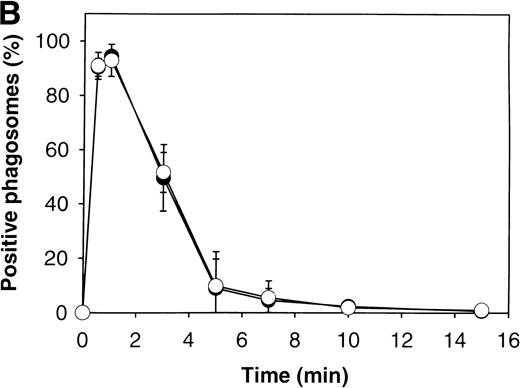
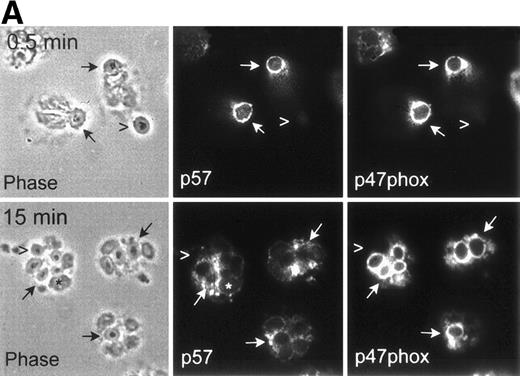
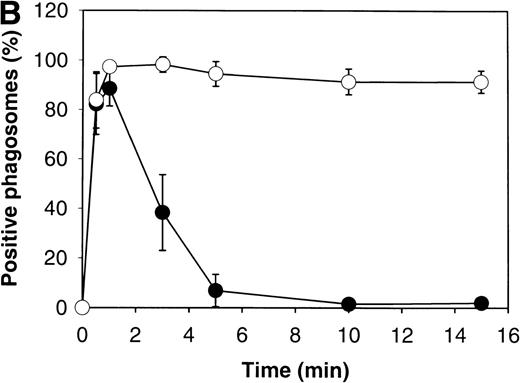

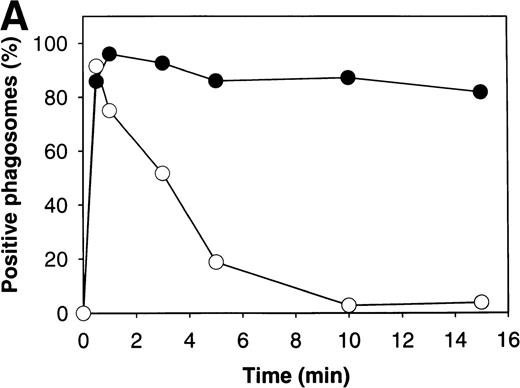
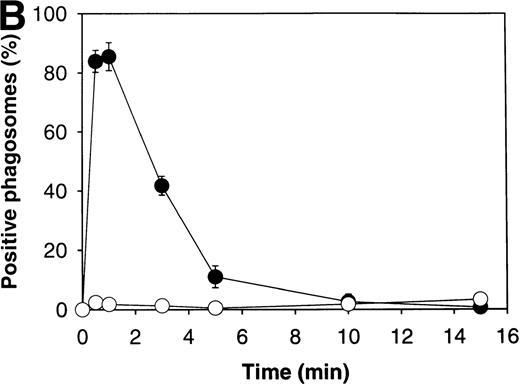
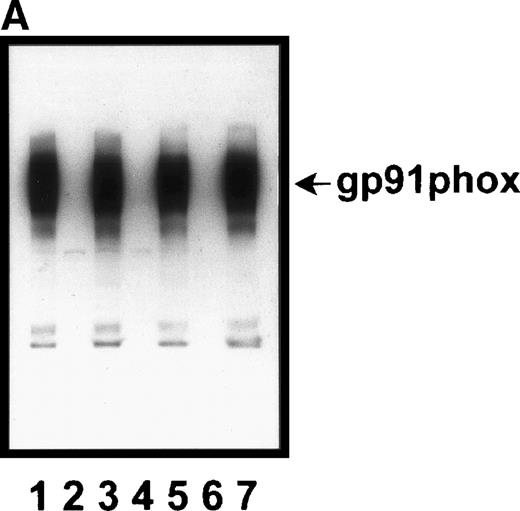
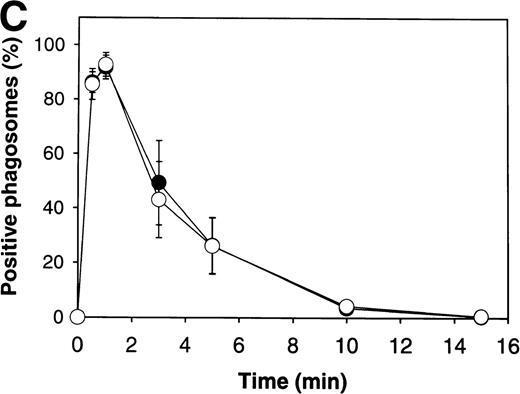
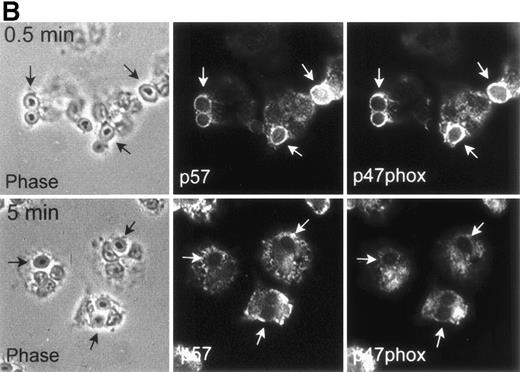
This feature is available to Subscribers Only
Sign In or Create an Account Close Modal